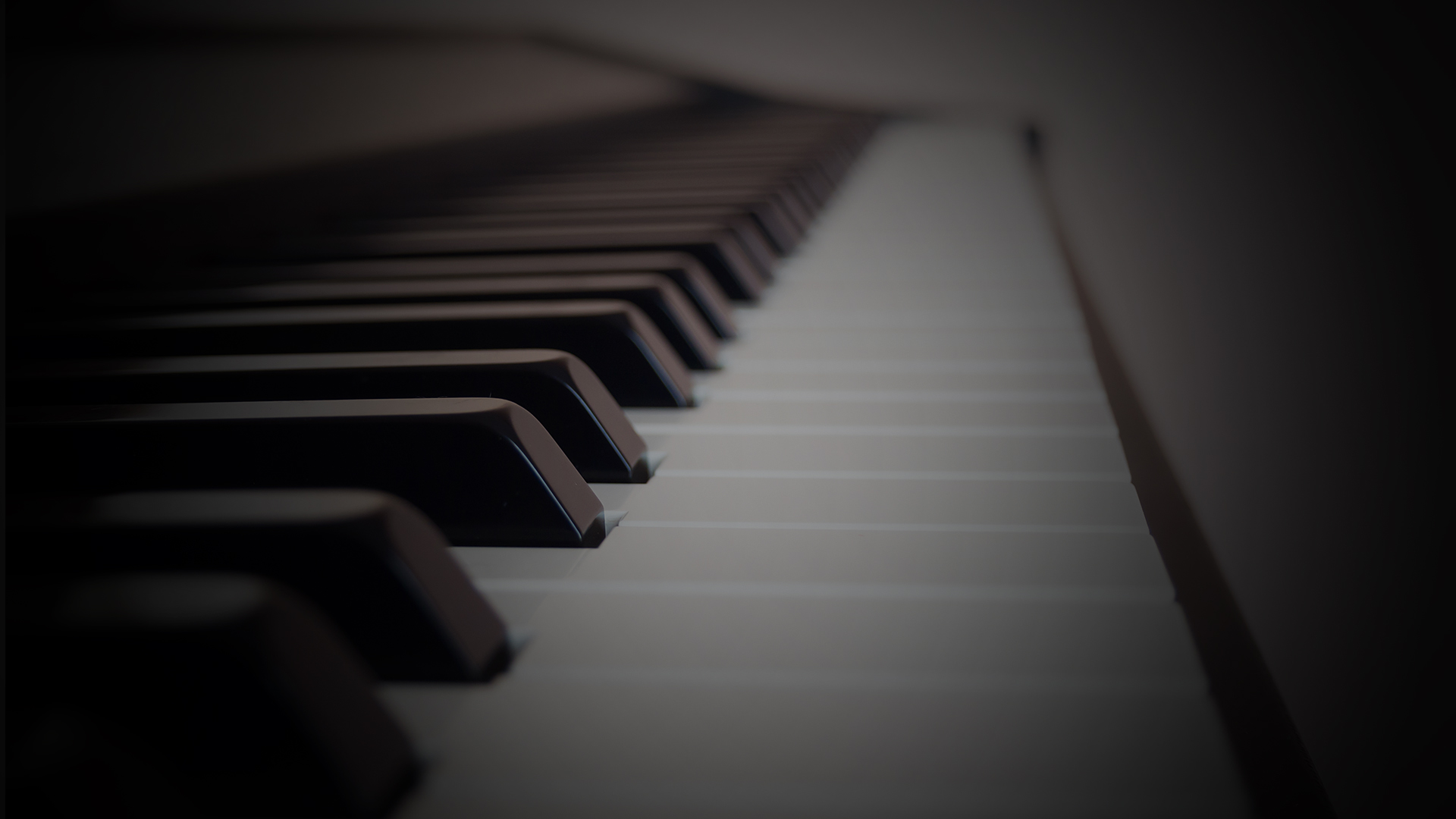3 Steps to Play Boogie Woogie Piano
Learning Focus
Music Style
Free Lessons
Get free weekly lessons, practice tips, and downloadable resources to your inbox!
If you’re an piano student with a lively personality that is right at home in a boisterous crowd, then boogie woogie piano music is a great fit for you! In today’s Quick Tip, 3 Steps to Play Boogie Woogie Piano, Jonny May shares essential boogie woogie piano tips and tricks. You’ll learn:
- Intro to Boogie Woogie Piano
- How to Play Boogie Woogie Piano Step-by-Step
- Boogie Woogie Piano Solo Demonstration
- Boogie Woogie Pianists You Should Know
Intro to Boogie Woogie Piano
Chances are, you recognize the sound of boogie woogie when you hear it. However, in this introduction, we’ll define boogie woogie in terms of its essential musical characteristics. We’ll also listen to a representative boogie woogie recording.
What is Boogie Woogie Piano?
Boogie woogie music is a fast-paced, instrumental sub-genre of blues that began in the 1870s as a type of dance music in the “barrelhouse” taverns of the Piney Woods region of northeast Texas. Boogie woogie piano music is based on a driving left-hand ostinato pattern of swung 8th notes, which is called “eight to the bar.” At the same time, a boogie pianist’s right-hand typically plays syncopated licks and riffs. Most boogie woogie tunes are played over the form of the 12-bar blues. However, boogie woogie compositions can also include intros, endings, turnarounds and breaks. Early boogie music was known by several other names, including “Fast Western,” “Fast Blues,” “Honky-Tonk” and “Texas Style.” ¹
Albert Ammons
“Boogie Woogie Stomp” (1939)
The city of Marshall, Texas is regarded as the “birthplace of boogie woogie.” In fact, the development of boogie woogie music has strong ties to the formation of the Texas and Pacific Railway which was chartered by the Texas government in 1870.² Indeed, the arrival of the steam locomotive can be heard in the whistle-like tremolos and the driving ostinatos of the boogie woogie pianists who developed the style.
“The basic boogie-woogie rhythm, an outgrowth of ragtime and rural blues, is said to have been inspired by the rhythmic clacking of steam locomotives throughout the Deep South.” ³
—Jeff Todd Titon, Ph.D., Professor of Music, Emeritus, at Brown University
How to Play Boogie Woogie Piano Step-by-Step
If you’re looking to have fun studying the piano and you don’t mind a bit of a challenge, then you’ll find that learning to play boogie woogie piano is an extremely exciting endeavor. In this section of today’s beginner boogie woogie piano lesson, we’ll help you take your first steps in playing this infectious piano style. Incidentally, the sheet music examples that appear throughout this lesson are excerpted from the lesson sheet that accompanies this tutorial. If you are a PWJ member, be sure to download the lesson sheet PDF and backing tracks. These resources appear at the bottom of this page when you’re logged in with your PWJ membership. In addition, members can easily transpose these boogie woogie examples to any key using our Smart Sheet Music.
Step 1: Boogie Left Hand Pattern
The first step to playing boogie woogie piano is to learn an authentic left-hand boogie accompaniment pattern. That’s because an “eight to the bar” left-hand pattern is the defining musical characteristic of the boogie sound. In all, there are dozens of boogie woogie ostinato patterns with various differences, including (1) single-note patterns, (2) double-note patterns, and (3) chordal patterns. Nevertheless, all left-hand boogie ostinatos establish the “eight to the bar” rhythm and serve to outline the harmony.
Today’s lesson using the following left-hand accompaniment, which is an example of a double-note pattern. The annotations illustrate the relationship of each note to the prevailing chord symbol. Note, the pattern technically begins with a “falling 5th” anticipation on the “and of beat 4.” In addition, the “blue” sound of the♭3 is often spelled enharmonically as ♯2, especially when it resolves upward.

The next step is to apply this left-hand boogie woogie ostinato over the entire 12-bar blues form. The notation example below and the accompanying backing track demonstrate the chord changes for a traditional blues in C.

When we apply our boogie ostinato to each chord of the 12-bar blues, we get the following left hand accompaniment.

If you’re interested in discovering additional boogie woogie and blues accompaniment patterns, then be sure to visit the following course:
🔎 Rockin Blues Bass Lines (Int, Adv)
Alright, now you’re ready to move on to Step 2.
Step 2: Classic Boogie Licks for Right Hand
In the boogie woogie style, a pianist’s right hand usually plays catchy, riff-like melodic materials with occasional special effects such as polyrhythms, punches, tremolos or smash-chord riffs. Therefore, in Step 2 of today’s lesson, you’ll learn three boogie woogie piano licks that are representative of the boogie woogie style.
Lick #1
Our first boogie woogie piano lick centers on a parallel 3rds motif and begins with pick-up notes on the “and of beat 3.” This lick is then transposed to match each chord in the 12-bar blues progression.

Now let’s examine another boogie woogie lick.
Lick #2
Our second boogie woogie piano lick features a descending line that combines 8th notes, triplets and top harmony over the major blues scale. For instance, the C major blues scale, contains the notes C–D–E♭–E–G–A. In addition, each descending line ends with an example of “punch chords,” which are rhythmic stabs on a stationary chord voicing. Unlike Lick #1, each entrance of Lick #2 begins in the same register. However, it is necessary to adjust some of the notes of Lick #2 to accommodate the chord changes in the blues form. For example, we avoid the note E♮ over the F7 because it clashes with the chord.

Next, let’s consider one more boogie woogie lick.
Lick #3
Our third boogie woogie lick has a fun and catchy flare. Just like Lick #2, this is an example of a non-transposing lick. However, you’ll notice that the lick is adjusted slightly over the F7 and G7 chords.

To learn even more authentic boogie woogie piano techniques, check out our flagship boogie woogie piano course below, which includes materials for beginner, intermediate and advanced players:
🔎 Jonny’s Jumpin Boogie (Int/Adv)
If you feel comfortable with the boogie licks in this section, then you’re ready for Step 3 where you’ll combine these licks into a solo!
Step 3: Connecting Licks with the Blues Scale
When you’re soloing in the boogie woogie style, you could conceivably play one boogie woogie lick after another. However, it also helpful to break up the licks a bit with some transitional material. One effective tool that boogie woogie pianists uses to connect their ideas is the minor blue scale. The C minor blues scale contains the notes C–E♭–F–F♯–G–B♭.

Before going on to the next section, take a moment to practice ascending and descending with the C minor blues scale in 8th notes over our left-hand boogie ostinato. Afterward, you’ll be ready play Jonny’s sample boogie woogie piano solo.
Boogie Woogie Piano Solo Demonstration
Alright, we’re ready to put together all of the piano techniques we’ve learned so far into boogie woogie solo. The following sample solo combines Licks 1–3 with transitional blues scale material. Let’s take a listen.

Boogie Woogie Pianists You Show Know
Boogie woogie is a fascinating musical style that catches the attention of many piano students and music lovers alike. In fact, listeners often want to know more about the pioneers and modern practitioners of boogie woogie piano music. Therefore, in this section, we’ll highlight some of the early boogie woogie pianists who were instrumental in popularizing this style as well as modern pianists who continue to perform boogie woogie music.
Many of the earliest boogie woogie pianists who pioneered the development of the musical style in the late 19th century were never recorded. However, oral history from the 1930s indicates that boogie woogie pianists were first heard in the lumber and turpentine camps of northeast Texas where many African-Americans worked.¹ During the first two decades of the 20th century, boogie woogie music spread to other American cities along the railroads, including Kansas City, St. Louis and especially Chicago.
The earliest boogie woogie solo piano recording is “Chicago Stomps” by Jimmy Blythe (1901–1931). Other prominent early boogie woogie pianists include Clarence “Pinetop” Smith (1904–1929), Meade Lux Lewis (1905–1964), Albert Ammons (1907–1949), Pete Johnson (1904–1967) and Jimmy Yancey (1894–1951).
The following boogie woogie recordings are representative of early boogie woogie piano music:
Jimmy Blythe
“Chicago Stomps” (1924)
Meade Lux Lewis
“Honky-Tonk Train Blues” (1927)
Clarence “Pinetop” Smith
“Pinetop’s Boogie Woogie” (1929)
Public interest in boogie woogie music peaked in the 1930s and 40s, especially due to the work of music producer and talent scout John Hammond (1910–1987). Hammond took a strong interest in boogie woogie music after hearing a recordings Clarence “Pinetop” Smith and Meade Lux Lewis. In 1938, Hammond organized a historic concert at Carnegie Hall entitled From Spirituals to Swing (Disc 1, Disc 2, Disc 3), which included three famous boogie pianists who became known as the Boogie Woogie Trio: Albert Ammons, Meade Lux Lewis and Pete Johnson.
The pianists of the Boogie Woogie Trio also appeared in several films during the Golden Age of Hollywood. For instance, Albert Ammons and Pete Johnson appear in The Boogie Woogie Dream (1944). And whether you know it or not, you’ve probably seen and heard Meade Lux Lewis in It’s a Wonderful Life (1946). Lewis can be seen playing the piano at Nick’s Bar when George Bailey and Clarence the angel enter the tavern.
Meade Lux Lewis in Its’s a Wonderful Life.
Even though the popularity of boogie woogie music decreased after the 1940s, the genre had strong influence on subsequent rhythm & blues and rock & roll pianists including Fats Domino (1928–2017), Little Richard (1932–2020) and Jerry Lee Lewis (1935–2022). In addition, there are many contemporary pianists who continue to perform and promote the boogie woogie style such as Alex Zwingenberger, Silvan Zingg, Jools Holland, Luca Sestak, Arthur Miggliazza, Ladyva and Brendan “Doctor K” Kavanagh.
Conclusion
Congratulations, you’ve completed today’s lesson on 3 Steps to Play Boogie Woogie Piano. After following these steps, you’ll be ready to take a seat at the piano and hold your own in any crowd.
If you enjoyed this lesson, then be sure to check out the following PWJ resources:
Courses
Quick Tips
- Beginner Blues Piano 1-Year Practice Plan (Beg/Int)
- Slow Blues Piano for Beginners (Int)
- 6 Steps to Play Beginner Blues Piano (Int)
- 7 Must-Know Styles of Blues Piano (Int/Adv)
- 1 Blues Piano Lick in 5 Levels of Difficulty (Beg–Adv)
- Play Blues Piano Accompaniment in 3 Steps (Int)
- Blues Piano Tritone Riffs for Maximum Crunch (Int)
- New Orleans Blues Piano–The Complete Guide (Int)
Blues Piano Learning Tracks
Jazz Swing Learning Tracks
Thanks for learning with us today! We’ll see you next time.
Would you like to comment on this lesson?
Visit this Quick Tip on YouTube
¹ Lowry, Todd. Boogie-Woogie Piano : The Complete Guide with Audio! Edited by Hal Leonard Publishing Corporation, Hal Leonard Corporation, 2013.
² Werner, George C. “History of the Texas and Pacific Railway Company.” www.tshaonline.org, Texas State Historical Association, 16 July 2016.
³ Titon, Jeff Todd. “History of Boogie-Woogie.” Timeline of African American Music, 2025, timeline.carnegiehall.org/genres/boogie-woogie.
 Writer
Writer
Michael LaDisa
Michael LaDisa graduated from the University of North Texas with a major in Music Theory & Composition. He lives in Chicago where he operates a private teaching studio and performs regularly as a solo pianist. His educational work with students has been featured on WGN-TV Evening News, Fox 32 Good Day,...
More Free Lessons
Want to learn how to serenade your soulmate with beautiful, romantic piano improvisation? Let your fingers do the talking with these 4 steps!
Struggling to play blues piano with skill and sensitivity? Master these blues piano left hand patterns to take your feel to the next level!
Explore the methods and mindset needed to comp on piano in the swing style with this complete guide to jazz piano comping for all levels.
Looking for downloads?
Subscribe to a membership plan for full access to this Quick Tip's sheet music and backing tracks!
Join Us
Get instant access to this Quick Tip and other member features with a PWJ membership!
Guided Learning Tracks
View guided learning tracks for all music styles and skill levels
Progress Tracking
Complete lessons and courses as you track your learning progress
Downloadable Resources
Download Sheet Music and Backing Tracks
Community Forums
Engage with other PWJ members in our member-only community forums
Become a better piano player today. Try us out completely free for 14 days!



